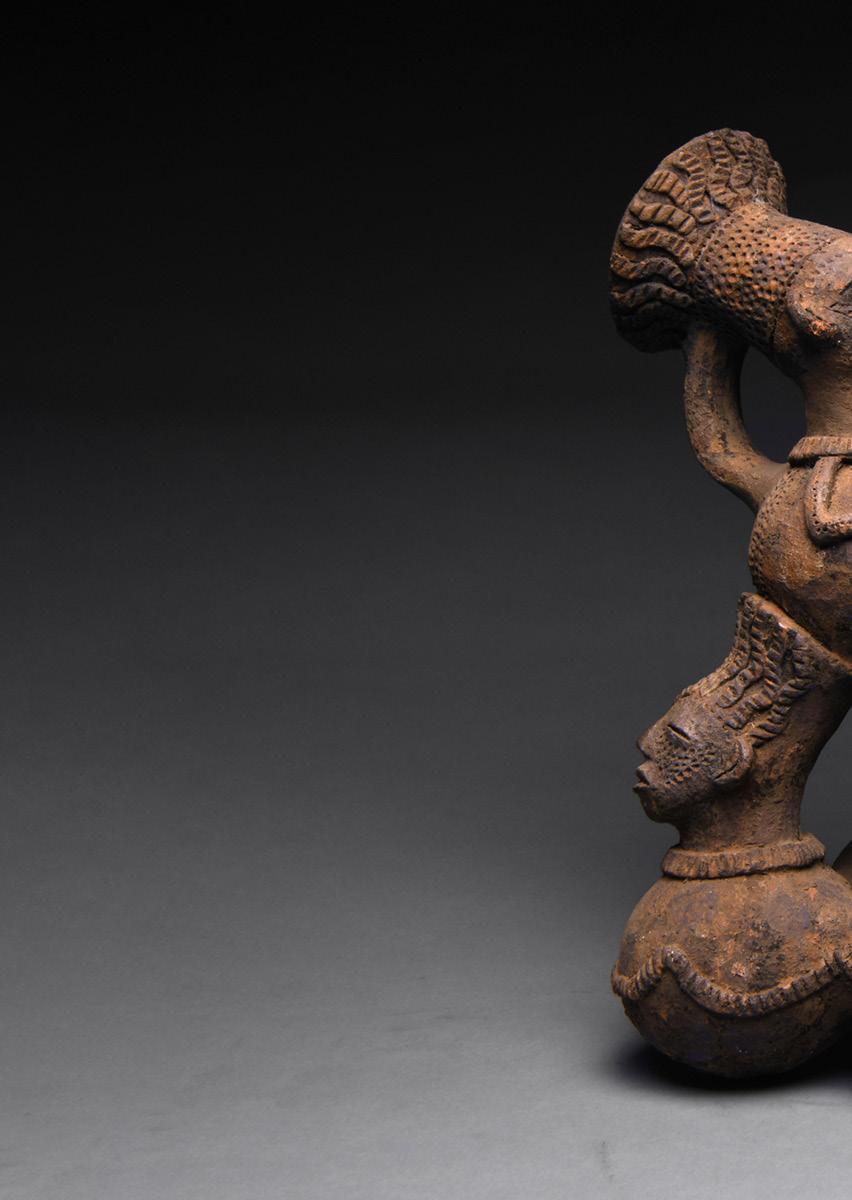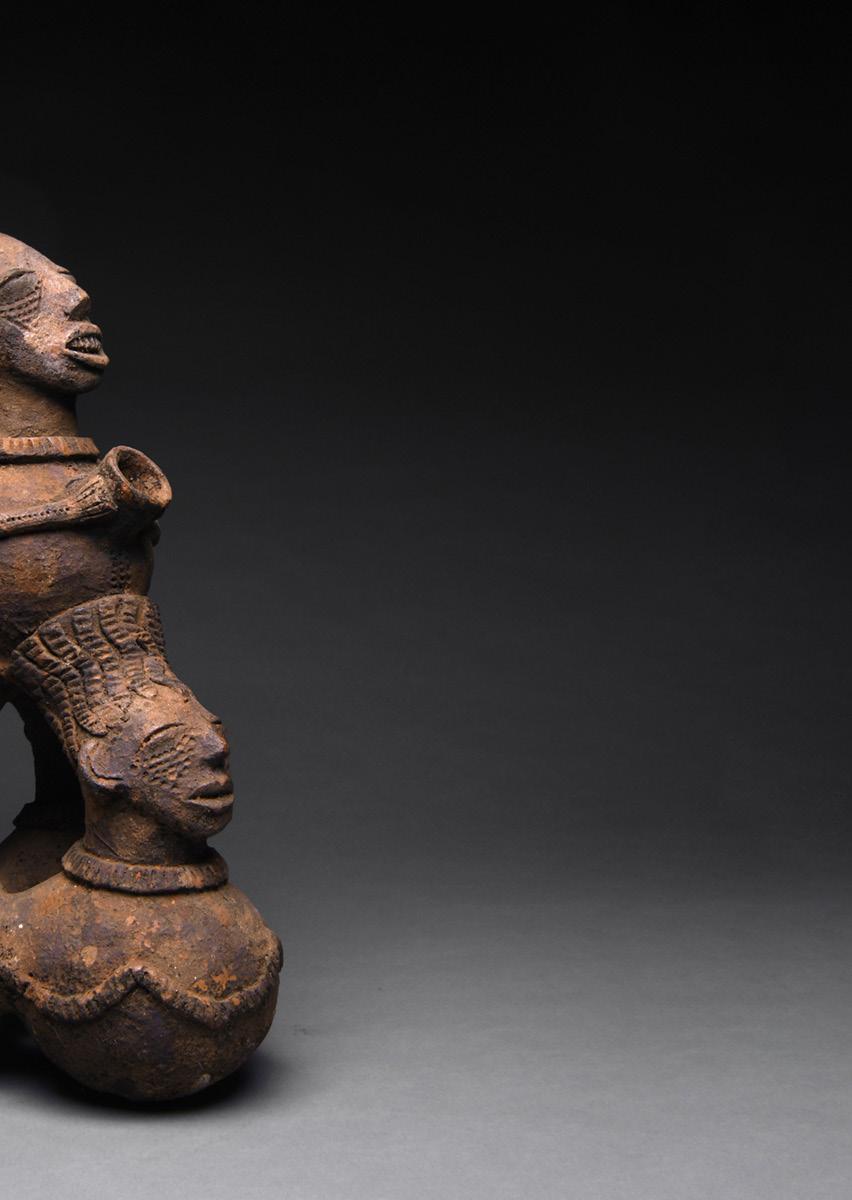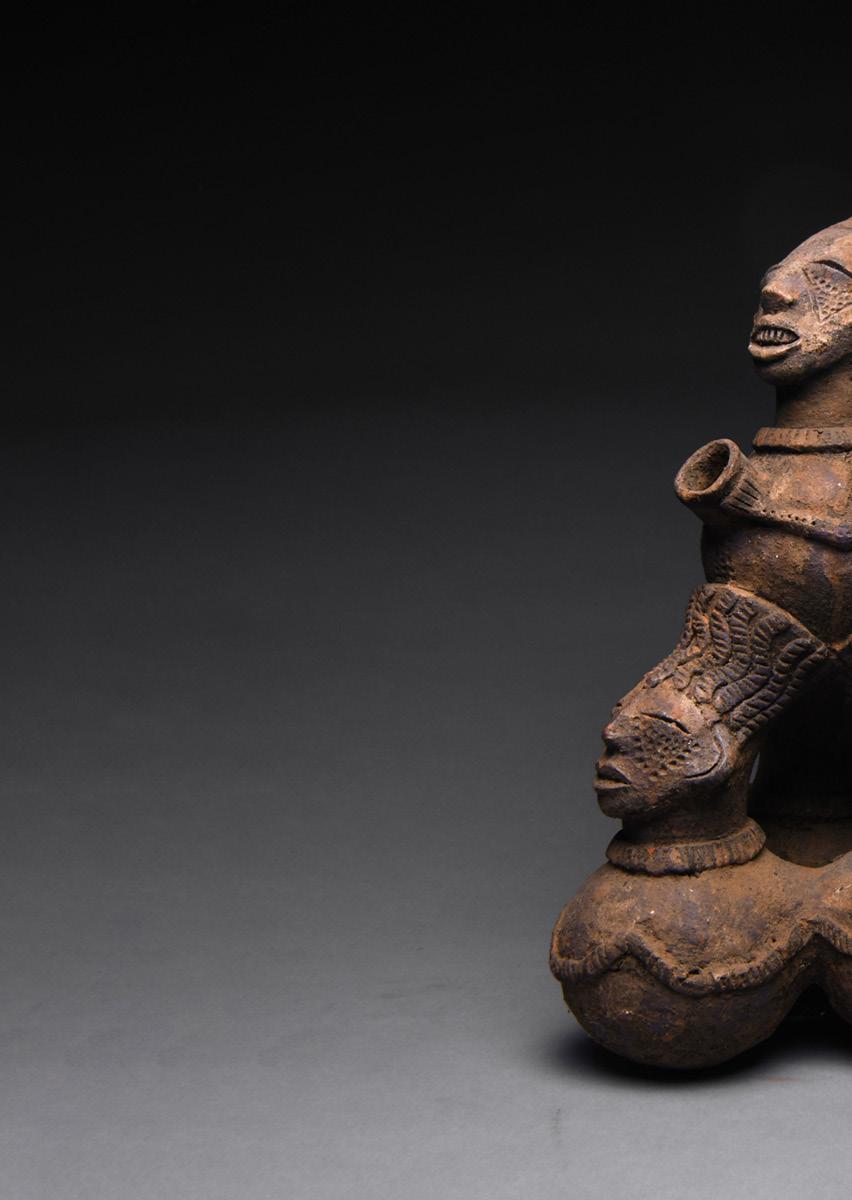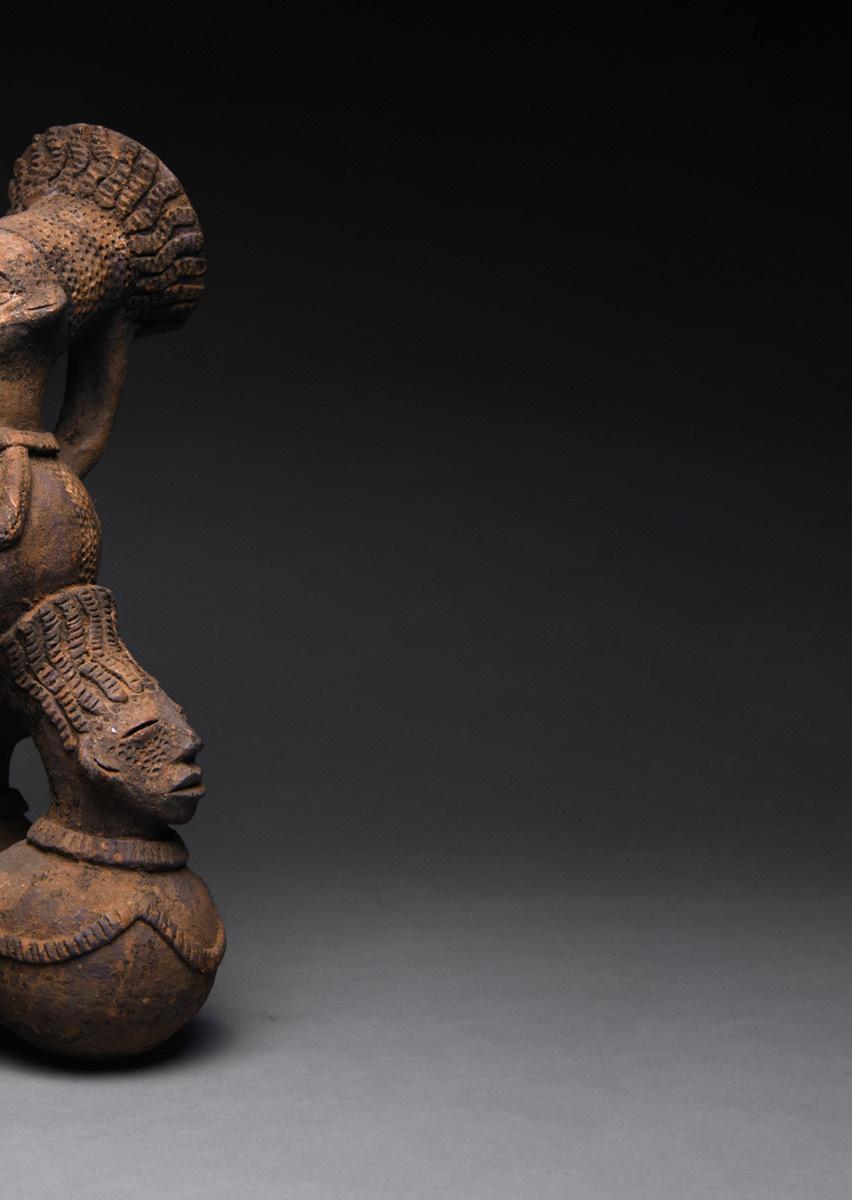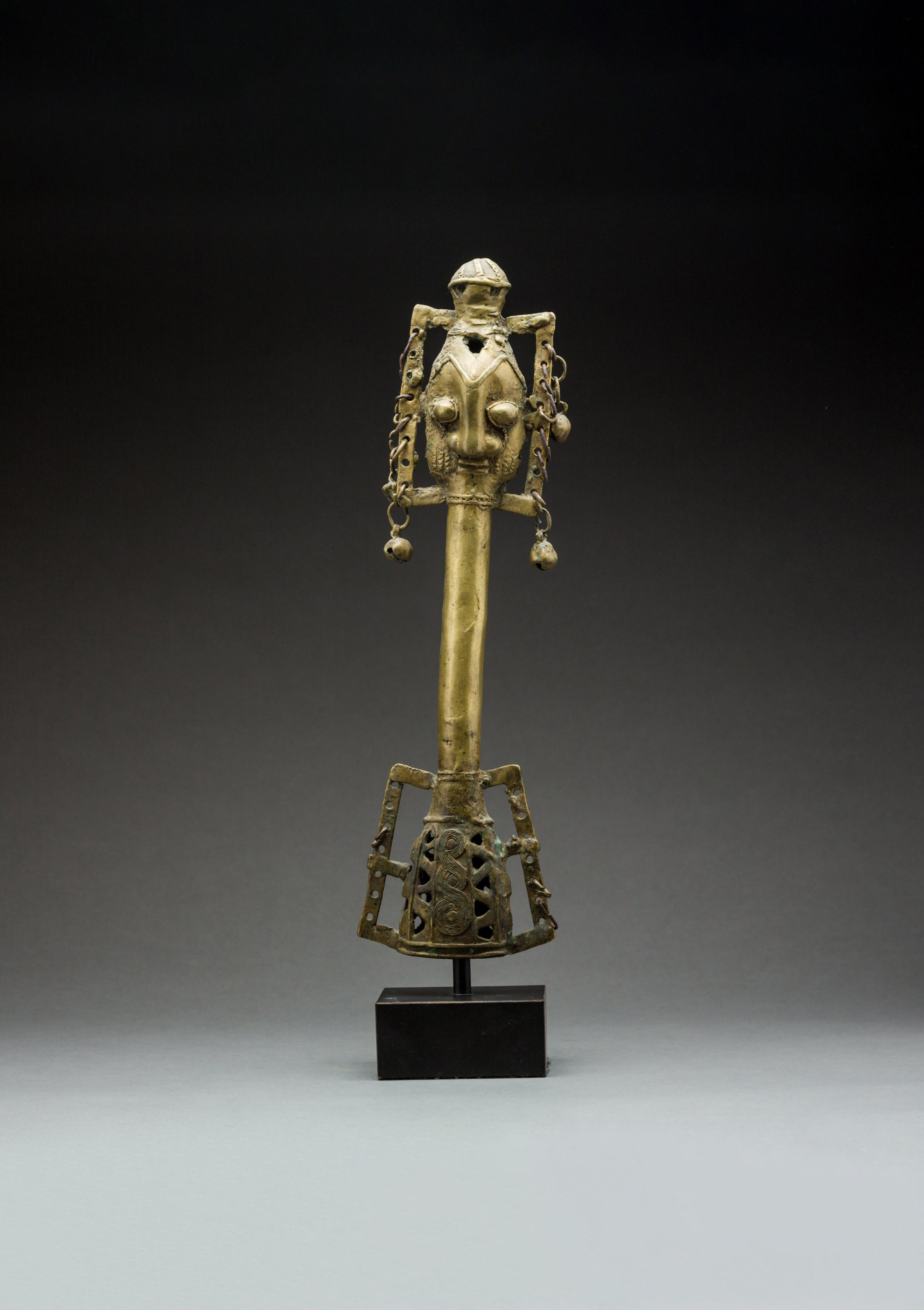
3 minute read
TERRACOTTA
from African Art
This impressive two-spouted ceramic vessel appears to have been made by one of the numerous Grasslands groups of Cameroon, specifically the Bamileke or Bamun people. It is essentially a cimple globular form, with an incised decoration pedestal base and a rounded top. The ground is undecorated, except for a series of incised chevrons around the shoulders – from whence the paired spouts emerge – and a row of beading that connects the aforementioned bands through the space made by the spouts. These are plain, and connected superiorly by an arched handle which is clad in raffia. The spouts are stopped by bird’s heads, which are attached to the handle by lengths of raffia twine. The Grasslands contains numerous small, quasi- independent kingdoms, notably the Bamileke, the Bamenda-Tikar and the Bamum. The king/fon/leader of the group and his courtly associates are equipped with regalia and prestige objects, leading to a proliferation of craftsmen and artists who occupied valuable social roles within the community. Even secular objects are decorated with characteristically Grasslands iconography, although function cannot always be ascertained, as in the current case. Given the peculiar nature of its construction it is likely to have occupied a supra-secular function, perhaps for administering libations or sharing valuable liquids such as wine. Whatever its purpose, it is an attractive and impressive piece of African art.
Grasslands Terracotta Vessel with Two Spouts and Bird-Headed Stoppers, 20th Century CE Terracotta 25.4 x 25.4 cm 10 x 10 in (MT.304 (LSO))
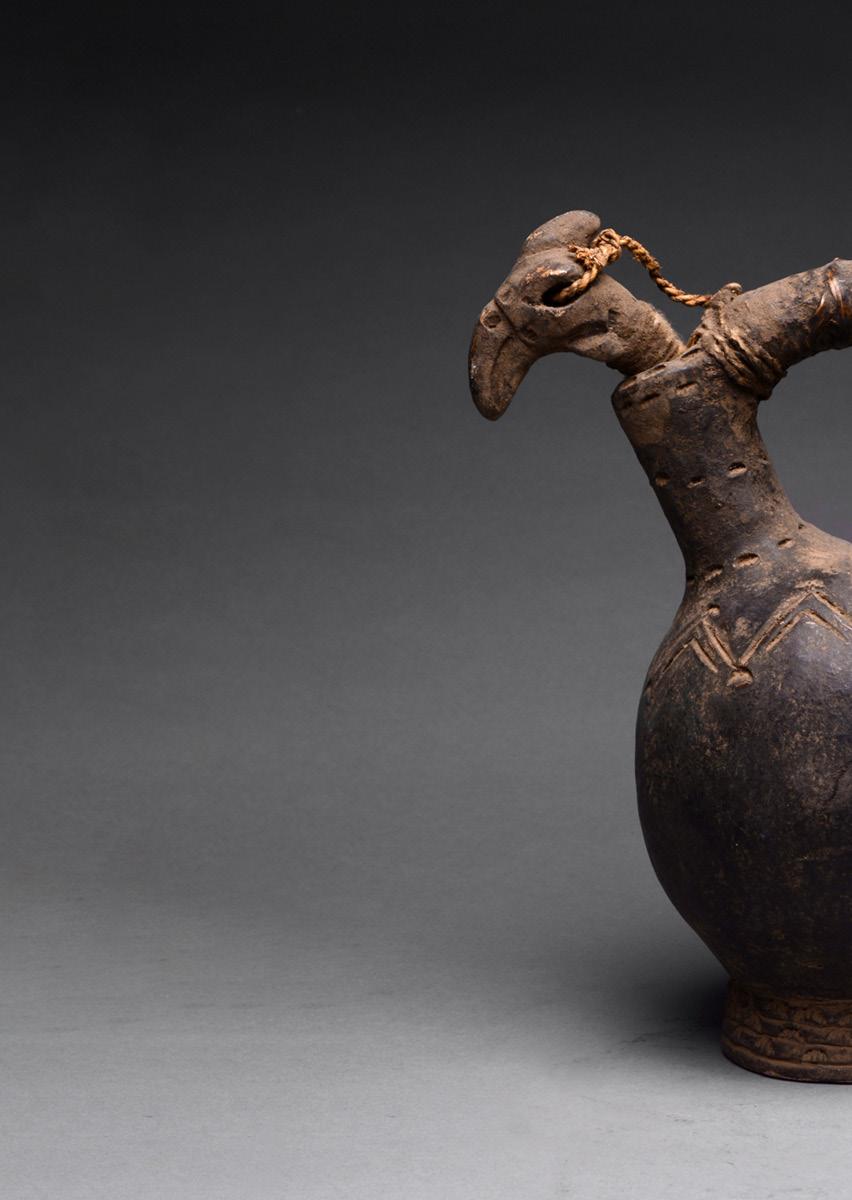
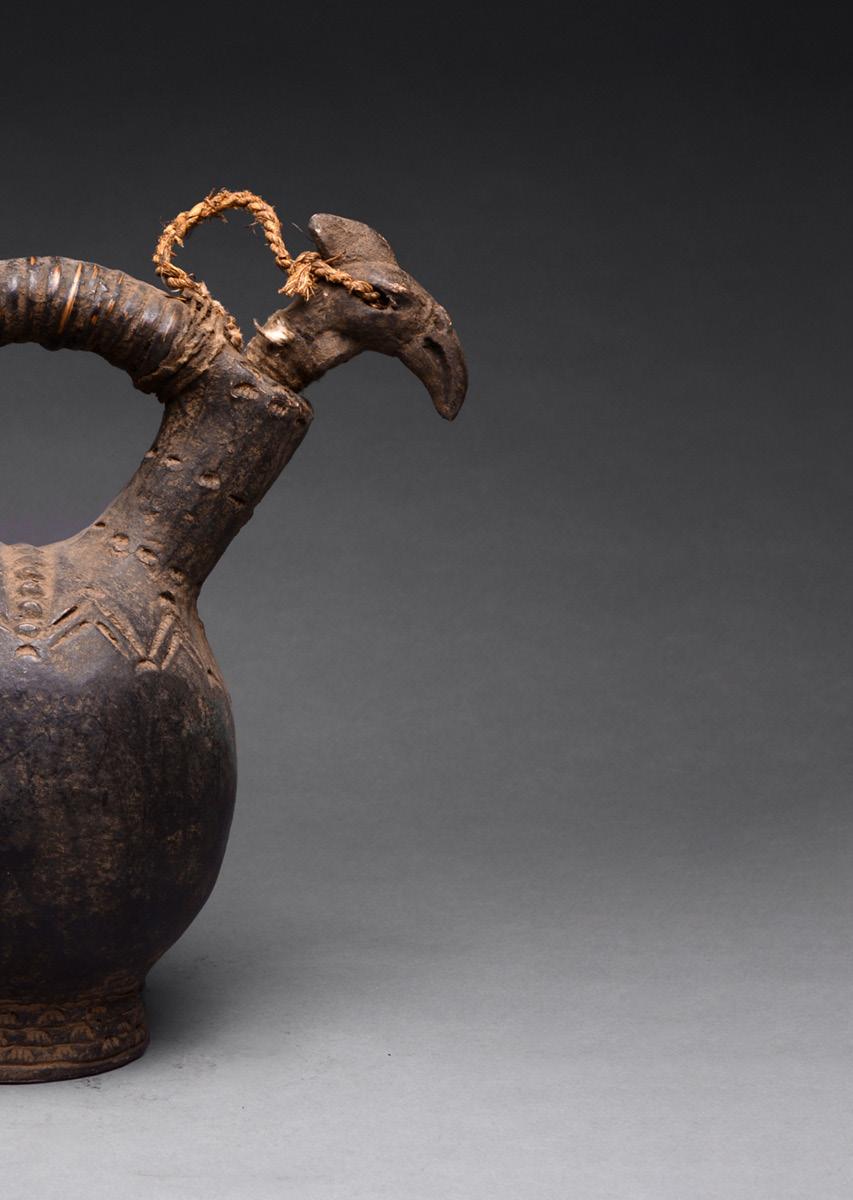
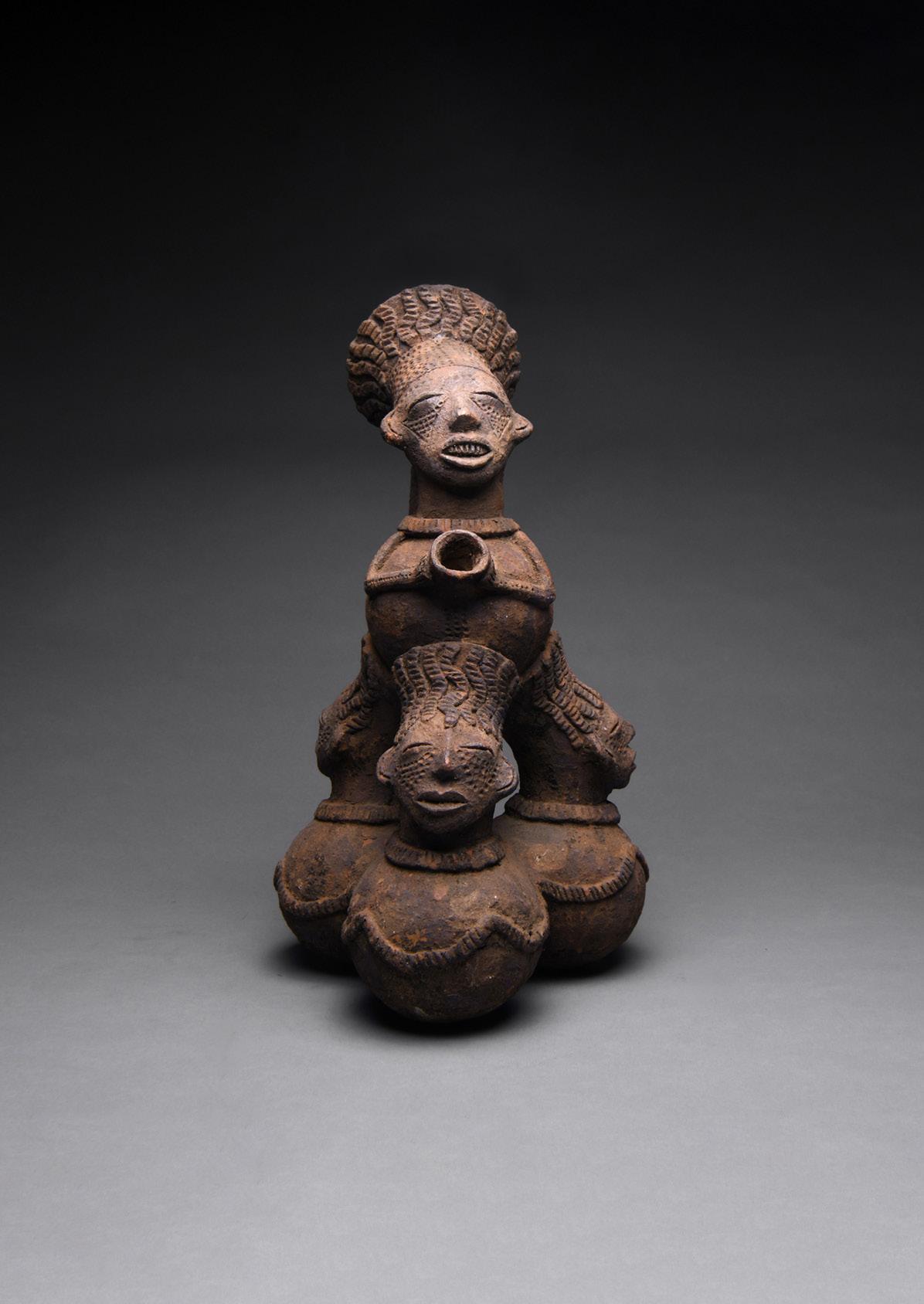
The Mangbetu moved to the Congo region from Sudan in the 1700s, and live in societies that revolve around a court system. They are particularly renowned for their professional musicians, and also for their extravagant dancing and ceremonial pageantry. Their artworks were produced for the royal court families, and ranged from architecture to objects of religious/spiritual significance and secular items decorated with pleasing motifs and designs.
Mangbetu art is perhaps most recognizable for the inverted-cone coiffures of the (usually female) figures that tend to adorn it. This is seen in the rare wooden figures, as well as in ceramics. The coiffure – exaggerated by cranial deformation during infancy – was worn by women until the 1950s. Most of the pieces found their way to the royal courts. Kings were originally believed to be semi-divine, able to control natural resources using magical objects such as leopard parts. Mangbetu resistance to European rule had serious socioeconomic repercussions, but by the time that the European hold on the area had solidified, the Mangbetu were in the habit of trading and exchanging prestige goods – notably ornate ceramics – between chiefly courts and to colonials.
The role of these pieces is uncertain. The Mangbetu creator god is named Noro (also Kilima), but there is little sculptural abstraction in Mangbetu art that hints at an aim beyond the representational, or the secular decorative. They may also represent ancestors, which the kings usually command be revered. It is possible that the decorations on such pieces are designed to repel the negative effects of ‘Likundu’ – evil spirits – or witchery, which is a major concern in Mangbetu society.
Mangbetu Anthropomorphic Vessel, 20th Century CE Terracotta 20.3 x 39.4 x 20.3 cm 8 x 15 1/2 x 8 in (CK.0406)
